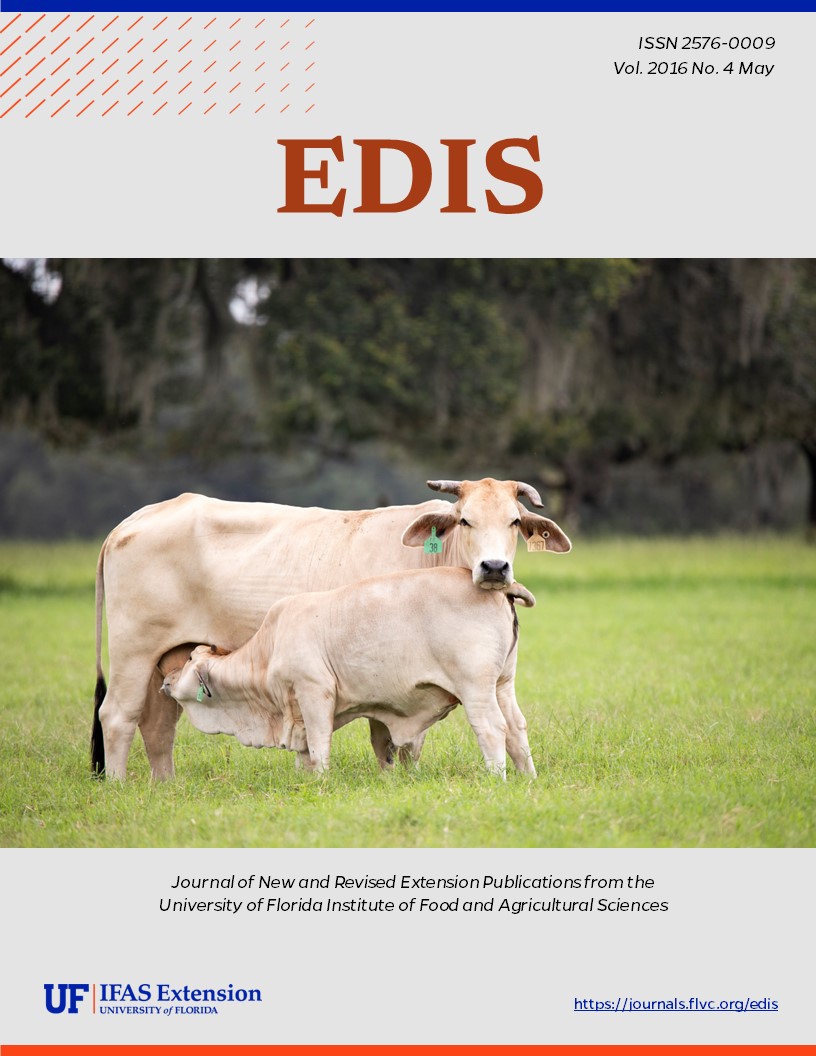Resumen
This EDIS publication is an alternate version of a page published first on the Featured Creatures website. The Featured Creatures collection provides in-depth profiles of insects, nematodes, arachnids and other organisms relevant to Florida. These profiles are intended for the use of interested laypersons with some knowledge of biology as well as academic audiences. This 4-page fact sheet that discusses the rustic sphinx was written by Morgan A. Byron and Jennifer L. Gillett-Kaufman, and published by the UF Entomology and Nematology Department, April 2016.
Citas
Brown J.W., Donahue J.P. 1989. The Sphingidae (Lepidoptera) of Baja California, Mexico. Journal of the Lepidopterists Society 43: 184-209.
Buchman S. (2014). Hawk moths or sphinx moths. USDA Forest Service. (25 November 2014)
Clavijo J.A., Chacin M.E. 1992. Sphingidae (lnsecta: Lepidoptera) reported as pests of Venezuelan crops: key to the species. Bolet in de Entomologia Venezolana 7: 119-125.
Genise J.F., Farina J.L., Verde M. 2013. Teisseirei barattinia Roselli 1939: The first sphinx moth trace fossil from palaeosols, and its distinct type of wall. Lethaia 46: 480-489. https://doi.org/10.1111/let.12025
Gillett-Kaufman J.L., Allan S.A., Buss U. 2015. Manduca rustica (Lepidoptera: Sphingidae) damage on olive (Oleo europaea; Lamiales: Oleaceae) trees in Florida. Florida Entomologist 98: 1272-1273. Available at http:/l dx.doi.org/10.653/024.098.0443 https://doi.org/10.1653/024.098.0443
Graham S.P. 2010. Visitors to southeastern hawkmoth flowers. Southeastern Naturalist 9: 413-426. https://doi.org/10.1656/058.009.0301
Heppner J.B. 2003. Arthropods of Florida and neighboring land areas: Lepidoptera of Florida. Florida Department of Agriculture 17: 395-399.
Kitching I.J., Cadiou J.M. 2000. Hawkmoths of the World: An Annotated and Illustrated Revisionary Checklist (Lepidoptera: Sphingidae). Cornell University Press, Ithaca, New York, USA. https://doi.org/10.1093/aesa/93.5.1195g
Pedron M., Buzatto C.R., Singer R.B., Batista J.A.N., Moser A. 2012. Pollination biology of four sympatric species of Habenaria (Orchidaceae: Orchidinae) from southern Brazil. Botanical Journal of the Linnaean Society 170: 141-156. https://doi.org/10.1111/j.1095-8339.2012.01285.x
Robinson G.S., Ackery P.R., Kitching I.J., Beccaloni G.W., Hernandez L.M. 2010. HOSTS·A Database of the World's Lepidopteran Hostplants. Natural History Museum, London, United Kingdom, http://www.nhm.ac.uk./hosts 26 Feb 2016.
Rustic sphinx. Manduca rustico. (Fabricius, 1775). (2014). Butterflies and Moths of North America. (23 November 2014).
Tuttle J.P. 2007. The Hawk Moths of North America: A Natural History Study of the Sphingidae of the United States and Canada. Wedge Entomological Research Foundation, Washington, District of Columbia, USA.
Wagner D.L. 2010. Caterpillars of Eastern North America: A Guide to Identification and Natural History. Princeton University Press, Princeton, New Jersey, USA. https://doi.org/10.1515/9781400834143

